Exclusive Photos: Recovery Operation of Ship’s Hatch Cover Gone Overboard During Rough Sea
A cargo vessel was going from Gingdao, China to Singapore. Since the ship was in ballast and the holds were empty for next loading, the crew was asked to clean the holds.
After 2 days of sailing, the ship reached the South China Sea. The ship had side rolling type hatches with gypsy in the centre to open and close the hatch.
In order to maintain the stability, the captain asked to open random sides of the hatches to maintain the stability.
All hatches were well lashed post opening, but while opening port side no.1 hatch, the sea got a bit rougher and the hatch started rolling on the track.
After rolling two times at each end, the hatch eventually rolled into the sea. But since it was of closed type, it dint sink and kept floating.
The ship then maneuvered for another 2 hrs to get alongside the giant floating part.
But the ship’s crew was smart and skillful. Two of the crew members got on top of the pontoon and moored the hatch cover alongside.
A barge was then called from a nearby dock. With the help of ship’s crew the pontoon was handed over to the barge.
The ship followed the barge to the dock, and on reaching the same, put the hatch cover back in its place.
According to the information received, all safety procedures were taken to during the recovery operation and rescue boats were kept ready of emergency situations.
Watch the photos of this rare operation at sea below:
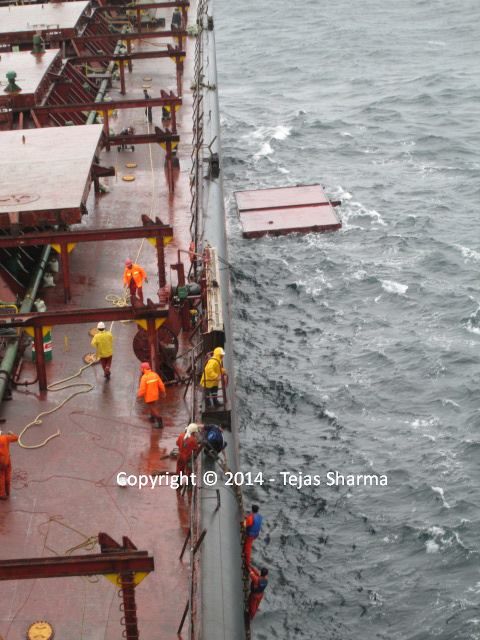
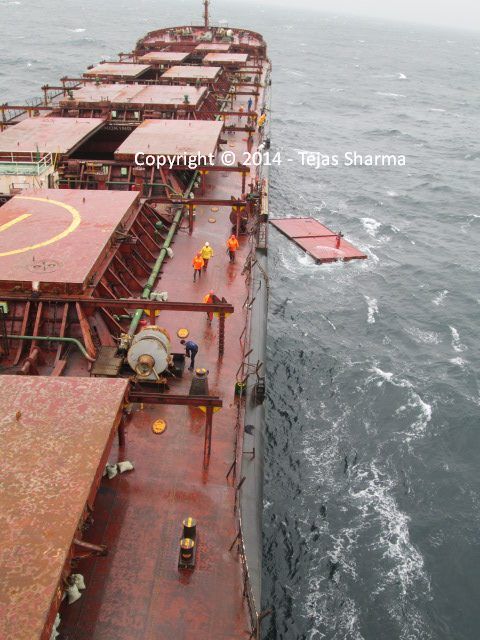



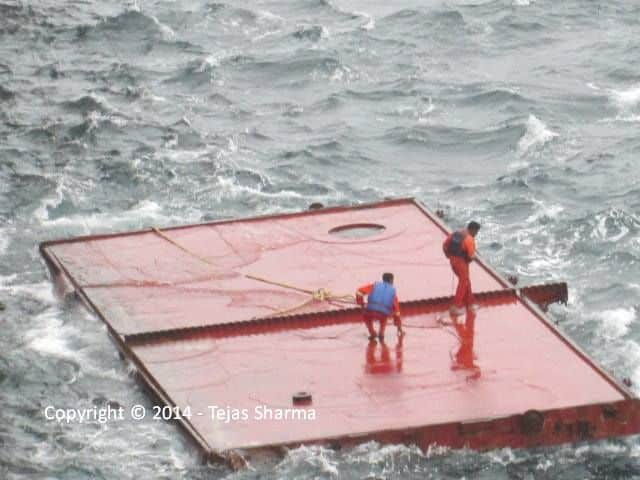
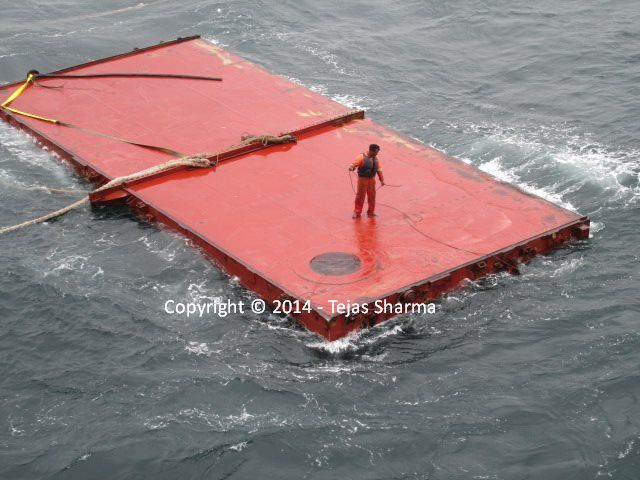




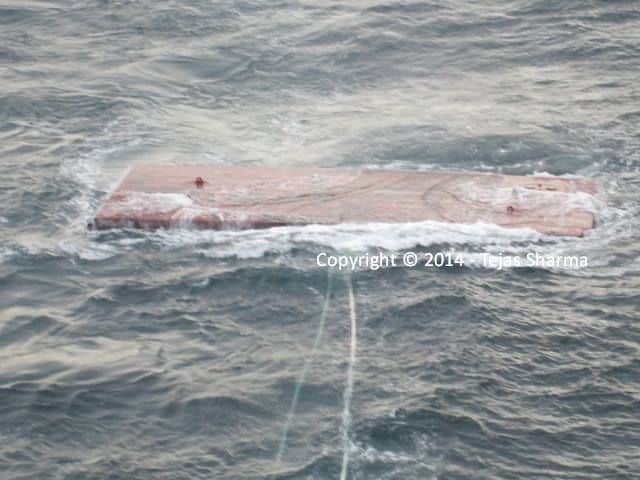
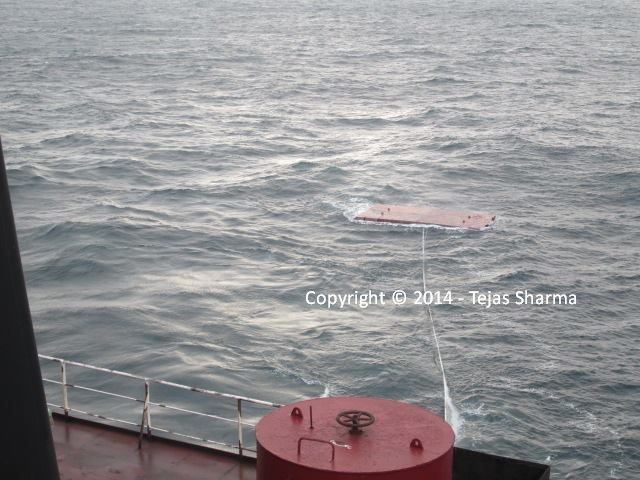
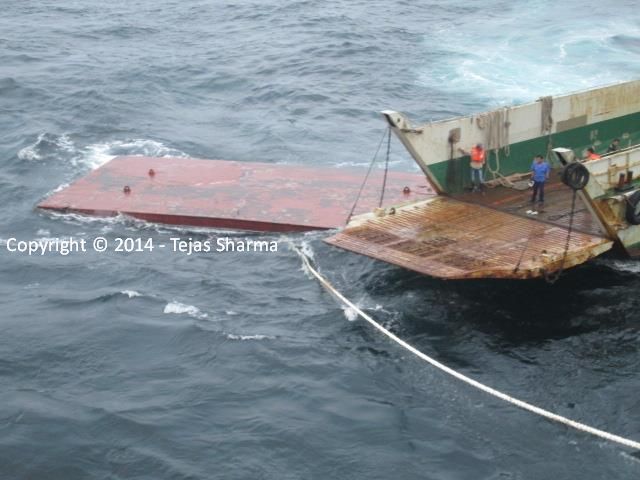
These interesting pictures have been shared by Tejas Sharma, a Deck Cadet in Merchant Navy and have been published with his permission.
The images cannot be copied, shared, or reused in any form without the permission of the photographer and Marine Insight.
Over to you..
Have you experienced such incident at sea? Let’s know in the comments below.
Want to share your pics/videos? Send them to us at info@marineinsight.com
Do you have info to share with us ? Suggest a correction
About Author
Marine Insight News Network is a premier source for up-to-date, comprehensive, and insightful coverage of the maritime industry. Dedicated to offering the latest news, trends, and analyses in shipping, marine technology, regulations, and global maritime affairs, Marine Insight News Network prides itself on delivering accurate, engaging, and relevant information.

About Author
Marine Insight News Network is a premier source for up-to-date, comprehensive, and insightful coverage of the maritime industry. Dedicated to offering the latest news, trends, and analyses in shipping, marine technology, regulations, and global maritime affairs, Marine Insight News Network prides itself on delivering accurate, engaging, and relevant information.
Subscribe To Our Newsletters
By subscribing, you agree to our Privacy Policy and may receive occasional deal communications; you can unsubscribe anytime.



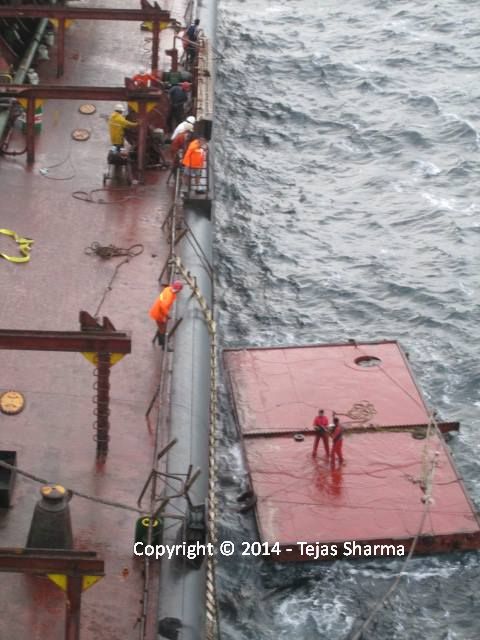


I like dis .
Nice job.
Why the hatchcover went aboard in the first place? Ha ha good hljob of recovery
Do you have any information about the operation cost? And how much it would cost if they did not go through this operation and directly claimed from insurance? Any idea about a brand new hatch cover? Thanks
This ever dangerous job nd risk taken nd its the one of the experience idea should be taken in that emergency situation seamen’s fr ever think safe be safe
I have never lost a hatch cover. Please tell me how does a ship changes the GM (that’s the distance between the Center of Gravity and the Center of Flotation) to supposedly improve stability?
I recommend that a ship does not open the hatch covers at sea but find ways to improve stability by ballasting.
The steamship company should be thankful that life wasn’t lost at sea unnecessarily this time around.
Commendable job seeing the seriousness of the situation.
The center of flotation( CF), is the centroid of the waterplane area and does not affect the vessel GM . It’s longitudinal component (LCF) along longitudinal axis is used for trim calculation, rather then GM calculation.
However it is worth mentioning regarding waterplane area that its transverse moment of inertia in relation to longitudinal axis is affecting metacentric height KM in such a way that the higher the moment is the bigger is KM .
GM is the difference between KM-metacentric height and KG- vessel center of gravity.
source: Ship Stability for Masters and Mates
Revised by Dr C.B. Barrass M.Sc C.Eng FRINA CNI
By Captain D.R. Derrett
It is my understanding that Capt Ilias inadvertent confusion of CF(center of flotation ) with CB (center of buoyancy) was caused by his utter disbelief and shock of what He discovered by reading this article and viewing the pictures of the near miss situation depicted by the author as the heroic and highly professional recovery.
Otherwise i fully support Capt Ilas remarks and comments.
quote
But the ship’s crew was smart and skillful
end quote
Was it really ?
I do strongly suggest to forward this excellent article of a young Cadet to
Email: mars@nautinst.org or MARS, c/o The Nautical Institute, 202 Lambeth Road, London SE1 7LQ, UK